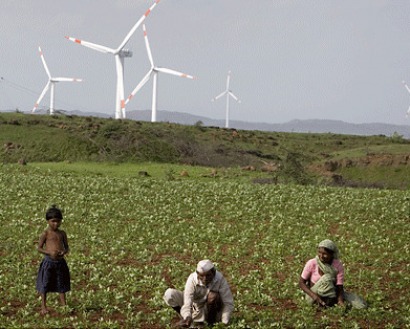
“There is plenty of room for further expansion - in 2011, India accounted for 4% of global investment in clean energy”, says BNEF. The large growth was driven by a seven-fold increase in funding for grid-connected solar projects: from $0.6 billion in 2010 to $4.2 billion in 2011. Solar almost reached the same level of investments as wind, which totalled $4.6 billion.
“There was concern at the beginning of last year that increasing lending rates might hit investment. Policy measures like the Jawaharlal Nehru National Solar Mission, and renewable energy’s increasing cost competitiveness, have made this a record year,” explains Ashish Sethia, head of India research at Bloomberg New Energy Finance.
Asset financing for utility-scale projects remains the main type of clean energy investment in India, with $9.5 billion in 2011. This is significant as the higher lending rates observed over the past year could have negatively impacted asset finance. Venture capital and private equity investment also made a strong comeback with $425 million invested in 2011, more than four times the 2010 figure. Wind and solar project developers such as Mytrah Energy India and Kiran Energy Solar Power succeeded in doing deals. The only major type of investment that fell in 2011 was equity-raising via the public markets. Only $201m was raised compared to a record $735 million in 2010 when the Indian stock market was at its all-time high.
The wind sector added a record 2,827 MW of capacity in 2011 compared with 2,140 MW in 2010. This kept India at the third rank globally in terms of new installations, behind China and the US. Bloomberg New Energy Finance estimates that 2,500 MW to 3,200 MW of wind capacity could be added in 2012. A substantial increase in grid-connected solar capacity was also observed, up from 18 MW in 2010 to an estimated 277 MW by end of 2011. In 2012, another 500-750 MW of solar projects could be added.
India’s 11th five-year plan, running from April 2007 to March 2012, targeted the addition of 12.4 GW of grid-connected renewable energy. According to Bloomberg New Energy Finance, this target will be exceeded, with 14.2 GW capacity installed during the period.
"The surge in installation of renewable energy shows that it is becoming cost competitive and scalable, at a time when India is struggling to meet its targets for conventional power capacity. To carry this momentum forward on renewables, federal and state governments will have to ensure four things. First, that transmission lines are available for projects; second, that the grid can handle an increased flow of renewable energy; third, that renewable purchase obligations are enforced; and, fourth, that project developers are paid on time for the power they produce," Sethia comments.
Michael Liebreich, chief executive of Bloomberg New Energy Finance, adds: "India's record performance in 2011, and the momentum it is carrying into 2012, is one of the bright spots in the clean energy firmament. With support mechanisms falling away in the US, the on-going financial crisis in Europe, and China already going flat out, it is gratifying to see some of the world's other major potential markets coming alive. India is firmly in the lead group and we are seeing interest around the world in being part of what is unfolding there."
For additional information:

